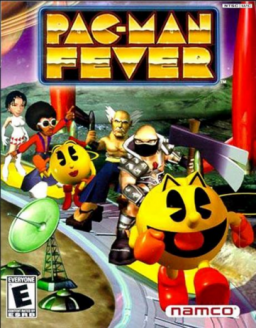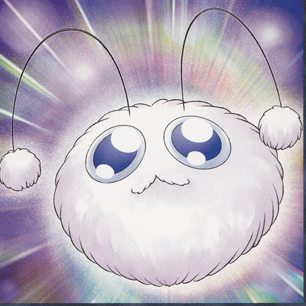I was going to reserve this for a guide for all Medieval mini-games, but I think this game warrants a special mention. While I would call Balloon Splash (Tropical) even more difficult than this, it seems to (mercifully) show up very rarely, whereas Fool's Hockey seems to be one of the most common Medieval mini-games, meaning this one will often show up when you least want it – when you're near a crucial store, when you're on the staging squares, etc. There's some good news and some bad news here:
The Bad: Fool's Hockey is extremely difficult to get highly consistent at. Even if you do get more consistent at it, this will probably never be a "breather" game like Dart Toss. The mini-game lasts 45 seconds – the only one of its kind on the Medieval board – meaning you waste 15 seconds to play a difficult game. The onslaught of pucks at the end can make you panic and take you from a strong 1st place all the way down to 3rd or 4th in the final seconds of the mini-game. Because the pucks get highly chaotic near the end (see 'How the Pucks Work' below), the game can also completely overwhelm you at the end through no real fault of your own. The mini-game is fairly common, and therefore learning it is key to consistency on the Medieval board.
The Good: Fool's Hockey, while very difficult to get highly consistent at, is quite feasible to get more consistent at. Furthermore, unlike Knightmares, you're not entirely at the mercy of RNG. Despite being difficult to consistently get first place, a quirk with the AI makes it one of the easiest games to "finesse" (short for "throw/lose with finesse") and deliberately get 2nd or 3rd place. Furthermore, if you've gone off-route and need to move 4 to get back onto it, this and Feudal Foosball are your best chances to do so in one round. The AI – while they have very good reflexes (at least when guarding the center of their goal) – are very prone to telegraphing their moves. Because, as mentioned before, the pucks get highly chaotic, this does mean that you can get very lucky at the end, having to field very few pucks while your AI opponents get completely overwhelmed. Finally, there's a way (albeit unreliable) to drastically reduce the chaos of the final 15 seconds.
If you want a video demonstration before, after, or while reading this, I put up a video here (I didn't reconfigure my layout to work without the splits, which is why there's a giant gap on the left):
==The Basics== Fool's Hockey sees you (Player 1) in the top-left corner of a square (technically octagonal), open hockey field. Player 2 is directly to your right, Player 3 directly below you, and Player 4 directly across. Your objective is to keep pucks that bounce around the field out of your own goal and get the lowest score. If a grey puck enters your goal, you gain 1 penalty point, and if a red puck enters, you gain 3. Pucks will bounce off of your hockey stick (controlled by the left analog stick) or, if you time it correctly, you can catch a puck by holding down 'X' on PS2 or 'A' on GameCube.
==Offense== Because you can catch pucks, you can also release and launch them toward other players. Your launch speed is significantly faster than when you simply let a puck bounce off of your stick, and you have far more control of it. Player 4's goal is difficult to hit, as it involves veeeery slightly tilting the analog stick. In general, your best bet is to let the other two AI take care of Player 4 while sending some occasional potshots their way just to keep them on their toes. It's generally best to stay on the offensive at the beginning while staying defensive in the final third of the game (see the 'Progression' section).
==Defense== The key to defense in Fool's Hockey is not getting panicky or jittery. Rapidly moving your hockey stick back and forth is better than nothing, but it's best to keep your movements calculated while keeping your attention focused on the pucks. Pucks can enter your goal through three discrete "lanes", so to speak, corresponding to the three stopping positions for your stick: far left, far right, and center. Treating these discretely makes mentally keeping track of pucks' trajectories much more manageable. Although it's fine to play offensively in the first two thirds of the game, the final third is more of a game of hot potato. If the most you can do is catch a puck and immediately launch it straight across to Player 4, that's fine – and, in fact, is good, since it means the other pucks are more likely to ricochet off of it into the other players' goals rather than into yours.
==Progression== The game changes as time goes on. From the start (45 seconds remaining) to when there are 25 seconds remaining, there will be two grey pucks on the field at any given time. Each time, it is immediately replenished from one of the gates (see below in 'How the Pucks Work'). From the 25-second mark until 15, there will now be three grey pucks, increasing the pace and putting on a bit more pressure. Starting at 15 seconds remaining, a fourth – red – puck is introduced. This change will be signified by a change in the music as well.
==How the Pucks Work== Part of the reason why the game gets so hectic at the end is that there are now four pucks, one of which can incur a penalty of 3 points. However, another major aspect is that pucks can ricochet off of each other, making their trajectories far more chaotic when they're all on the field. If you're holding a puck and another puck hits your stick, the puck you're holding will be released, and they'll both move away from your stick. After a puck is removed from play (when it enters a goal), it is immediately replenished to bring the puck total back up to what it should be; this new puck is traveling at a high speed. Furthermore, the puck replacement corresponds with which color puck was removed. Which gate the next puck comes out of appears to be entirely independent of who shoots the puck, what type of puck it is, or whose goal it lands in. Replacement pucks are not reintroduced for pucks that are being held; this becomes extremely important in the next section.
==A Possible Trick== From the previous sections, you should've gathered that the final 15 seconds is extremely hectic because there are more pucks to keep track of and – most importantly – those pucks ricochet off each other when they touch, making for a highly chaotic system. However, you can completely remove one degree of freedom from this chaos while setting up a good defense. Just around when things start speeding up, grab a puck with your stick. However, do not release it. Because you're holding a puck, there are now only three on the field. While this may not seem like much, even just adding one degree of freedom to a system makes it immensely more chaotic, so removing one from the system also corresponds to a huge reduction in chaos. The three pucks should be easier to keep track of, and if a puck comes your way, you can either a) launch the one you have toward it and make them ricochet around, \b) block it with your stick and have both of them slowly bounce off, or c) (risky) launch your current puck away and grab this new one. 'b)' seems to work especially well, as this slows the pucks and buys time while you wait for the clock to tick down. By trying to keep a puck held as long as possible during these final seconds, the endgame is rendered manageable. However, a big caveat to this strategy is that it's contingent on you being able to hold onto pucks for a large portion of the last 15 seconds, which isn't always easy or even feasible depending on the AI and the puck luck you get. Furthermore, this should only be used when you're already substantially ahead of the AI going into the final third, as by reducing the chaos, you're also reducing the chances that pucks will go into the opposing goals.
==Finessing== Because of the way the field is set up, Player 4 will often come in 1st or 2nd place should you be playing an active role. Because you'll mostly be on the defensive in the final 15 seconds of the mini-game, it's important to take any opportunity you reasonably can in the first 2/3 of the game to sabotage either only one adjacent player (if going for 3rd place) or both adjacent players (if going for 2nd).
==Telegraphing== The AI often telegraph their moves against you, only rarely faking you out and sending the puck somewhere else. Most often (but not always), the adjacent AI will aim for the exact corner of your goal closest to them, while the AI across from you will aim it at the center of your goal. By contrast, the AI generally will not notice when you're telegraphing your moves. This is especially useful in the beginning of the game, as it means you can take your time lining up your shots while still keeping an eye on the field.




